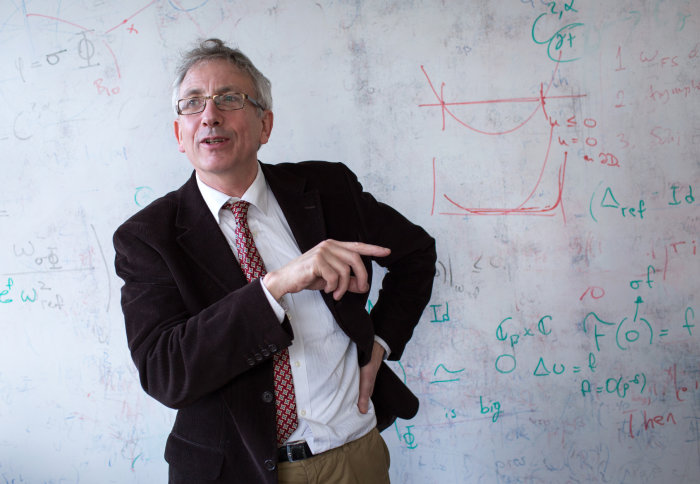Simon Donaldson awarded Wolf Prize for Mathematics

Professor Sir Simon Donaldson
An Imperial researcher has been jointly awarded the 2020 Wolf Prize for Mathematics, one of the world’s most prestigious academic accolades.
Professor Sir Simon Donaldson, Chair in Pure Mathematics at Imperial, will receive the Wolf Prize for Mathematics in for his contribution to differential geometry and topology. He shares the $100,000 award with Professor Yakov Eliashberg from Stanford University.
 The Wolf Prize is one of the most esteemed prizes in the world and - alongside the Fields Medal, which Professor Donaldson also holds - is considered the closest equivalent to a 'Nobel Prize for Mathematics'. The prize is awarded in Israel each year to outstanding scientists and artists from around the world for “achievements in the interest of mankind and friendly relations among peoples”.
The Wolf Prize is one of the most esteemed prizes in the world and - alongside the Fields Medal, which Professor Donaldson also holds - is considered the closest equivalent to a 'Nobel Prize for Mathematics'. The prize is awarded in Israel each year to outstanding scientists and artists from around the world for “achievements in the interest of mankind and friendly relations among peoples”.
The Wolf Prize follows Professor Donaldson’s receipt of the Fields Medal in 1986, and the $3m Breakthrough prize in 2014.
This year’s Wolf Prize ceremony takes place on June 11 in Jerusalem. Other winners include Pablo Jarillo-Herrero, Allan Macdonald and Rafi Bistritzer for physics, Cindy Sherman in art and Caroline Dean in agriculture. Previous recipients of Wolf Prizes include Steven Hawking and Paul McCartney.
Professor Nick Jennings, Vice Provost (Research and Enterprise) at Imperial, said:“Simon’s outstanding work has transformed his field along with several aligned disciplines, leading to a step change in our understanding of mathematics.
"We are very proud to count him among our community and congratulate him wholeheartedly on this fitting honour.”
Stunning discovery
Professor Sir Simon Donaldson is renowned for his work on the topology of smooth (differentiable) four-dimensional manifolds and the Donaldson–Thomas theory. His research includes a unique combination of novel ideas in global non-linear analysis, topology, algebraic geometry, and theoretical physics.
As a graduate student at the University of Oxford, Professor Donaldson made a discovery that earned him international esteem and stunned the mathematical world. He showed that there are phenomena in 4-dimensions which have no counterpart in any other dimension. This went against the accepted understanding at the time.
Professor Donaldson is renowned for applying physics to solve mathematical problems, a remarkable reversal of the usual interaction of these two subjects. His worked has led to a greater unity between the two subjects, resulting in great progress in both. Many of his techniques are now pervasive throughout many branches of modem mathematics and physics.
Article text (excluding photos or graphics) © Imperial College London.
Photos and graphics subject to third party copyright used with permission or © Imperial College London.
Reporter
Deborah Evanson
Communications Division